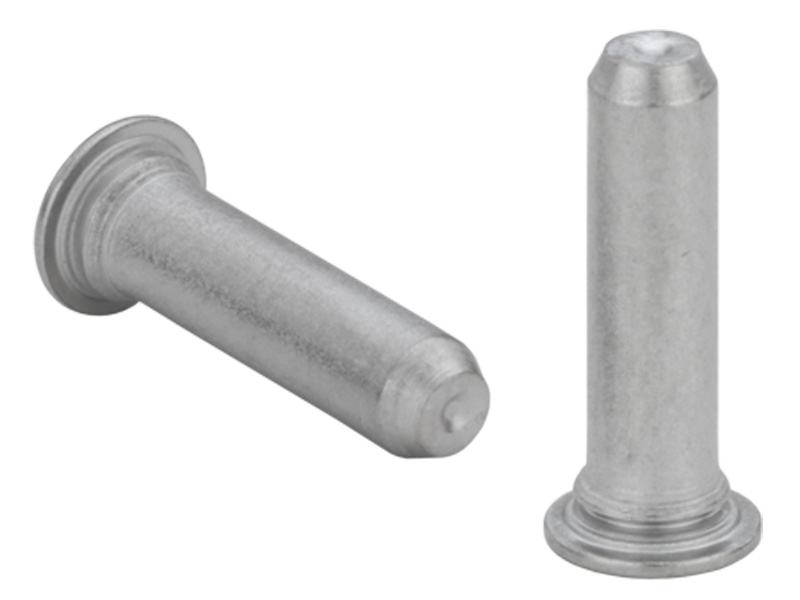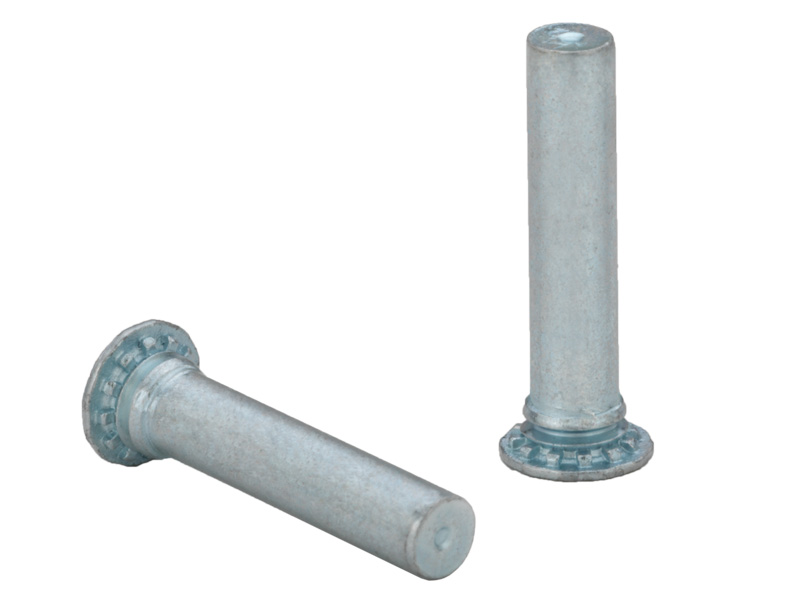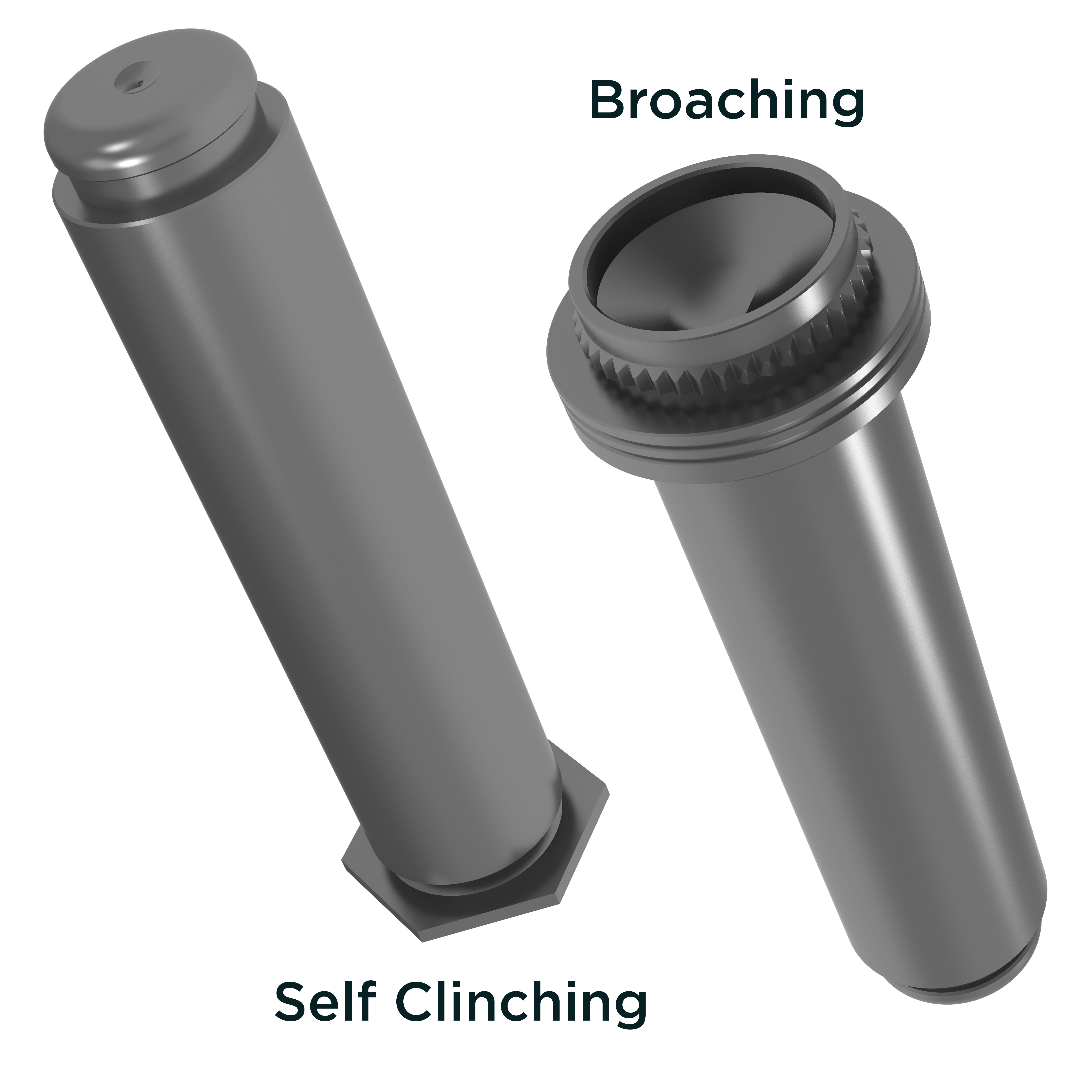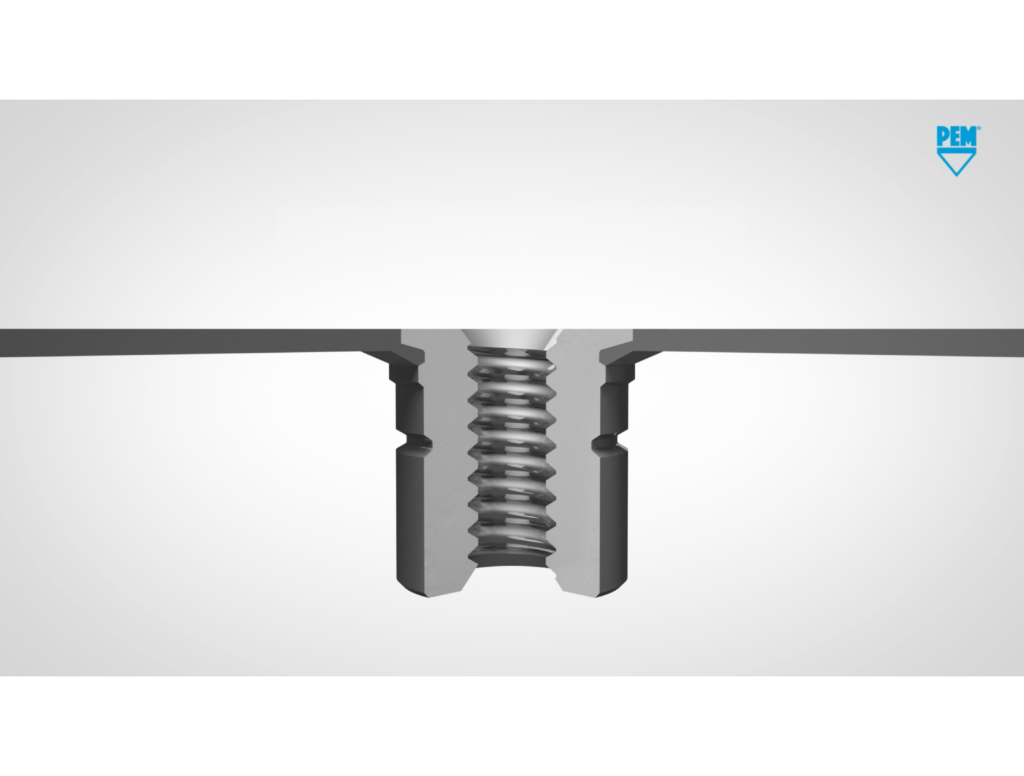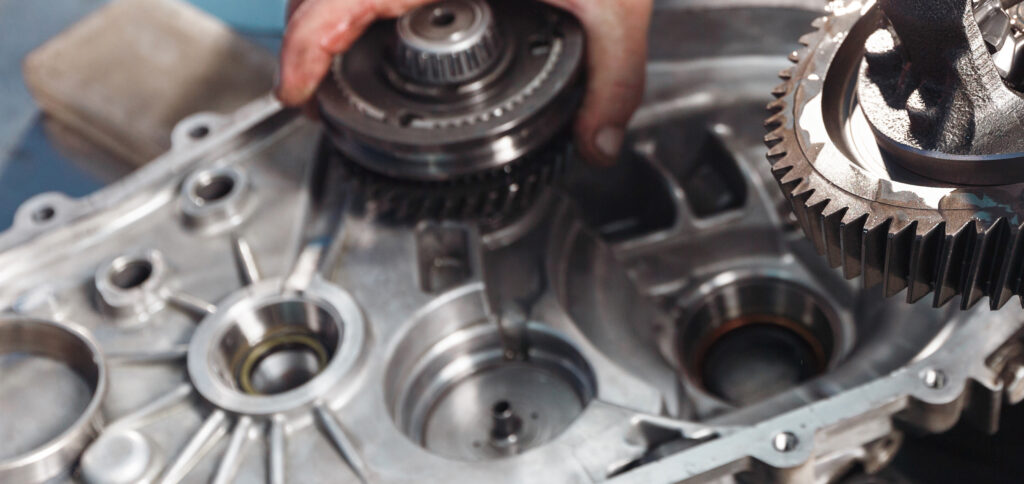Studs | Locating Pins
Table of Contents
Product Pages
Standoffs
KEYHOLE® Standoffs
SNAP-TOP® Standoffs
Nuts
Clinch Nuts
Floating Nuts
Blind Nuts
Flush Nuts
Locking Nuts
Rivet Nuts
Studs
Locating Pins
Captivated Screws
Simple Screws
Spring-Loaded Screws
Knob Cap Screws
Threaded Inserts
Press-In Inserts
Molded-In Inserts
Ultrasonic/Heat-Staking Inserts
Compression Limiters
Specialty Fasteners
Cable Tie Mounts
TACKPIN®
Panel-to-Panel Fasteners
Right Angle Fasteners
Attachment Technologies
Overview
Locating pins or pilot pins are similar in form to studs except for their absence of threads. Instead, they have a round or sometimes diamond profile length with a tapered tip. Since there are no threads to hold a load and the part is only subject to shear loading, there is no need for anti-rotation features, making round bar stock the main raw material geometry for locating pins. They can sit pressure-fit in to a milled hole, as well as more permanent attachment methods for thin panels.
Application
Locating pins help align components prior to fastening, which is especially useful when dimensional accuracy is a priority. Servers for telecom and datacom applications pack many components into the smallest space possible, requiring tight tolerances that become tedious when multiplied into large systems of servers. When fastening to a vertical surface, hardware can be minimized if two of the four attachment points are locating pins instead of studs. This ensures four stable corners with only two loose nuts. Additionally, diamond locating pins can be useful in tandem with round pins for very small tolerance situations, as they allow for some play between pins and reduce the possibility of binding.
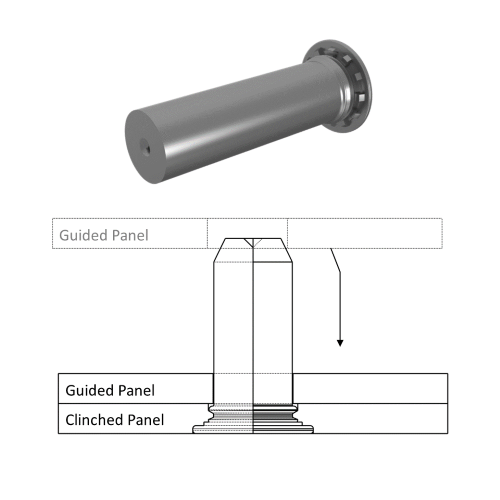
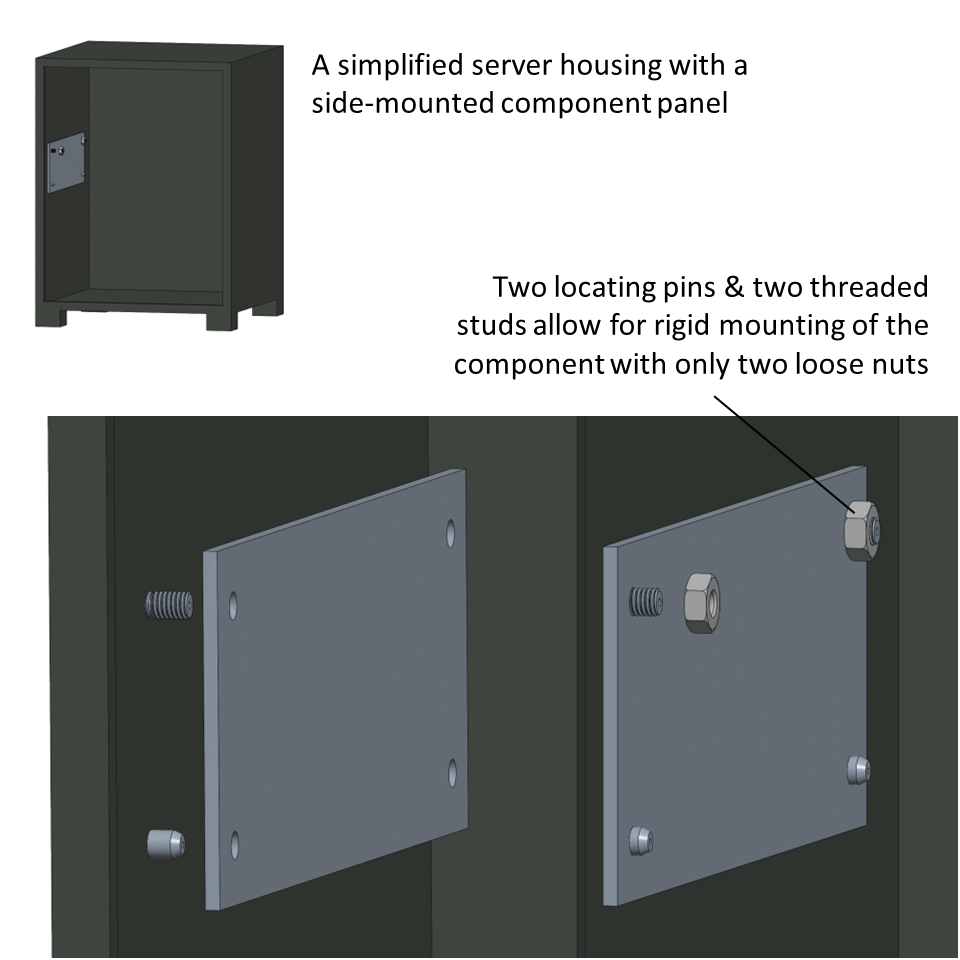
Locating pins can be used alongside threaded studs to minimize loose hardware without sacrificing support.
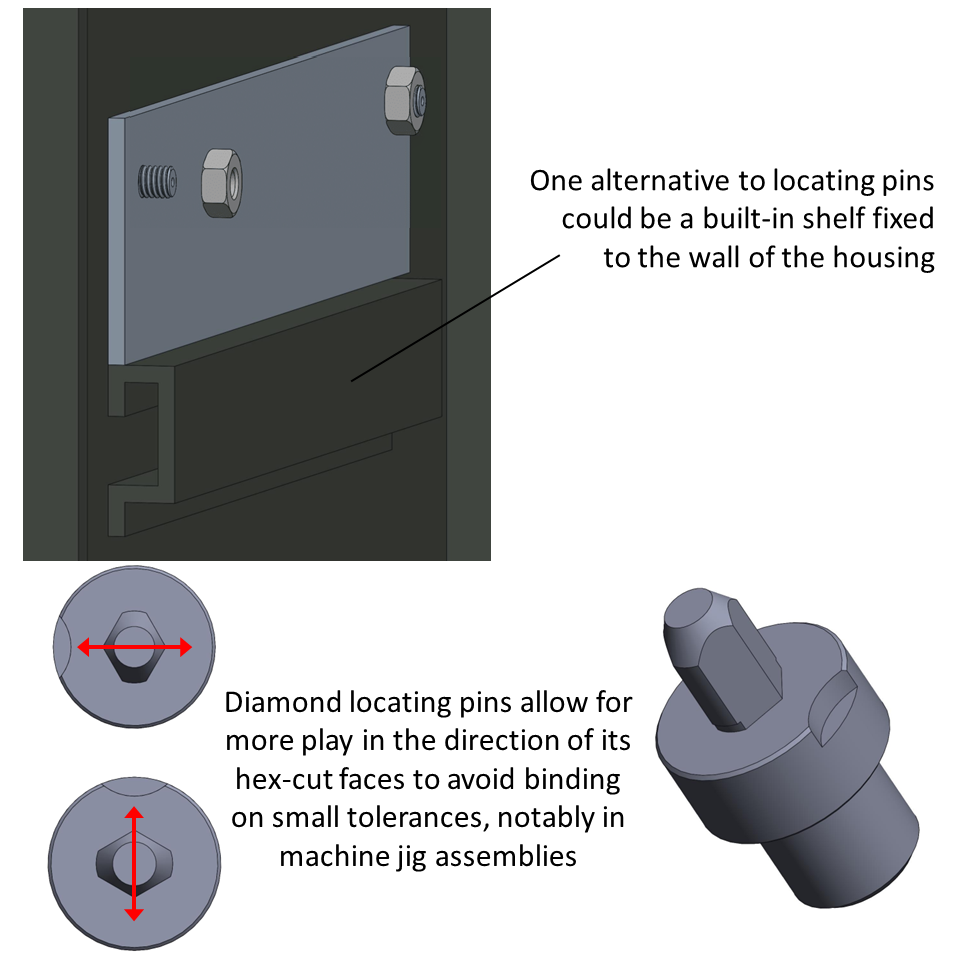
Most alternative solutions to locating pins face tradeoffs between directional stability, manufacturing, and tolerance challenges.
Alternative Solutions
The obvious alternative is to have threaded studs on all four corners, which would ensure restriction of movement in all three axes but require more loose parts and increased install time. A ledge could be designed into the vertical surface to provide the same support with less hardware, but at the expense of flexibility and manufacturing time. However, since locating pins have no axial restriction of movement, they may not be secure enough to replace threads in more mobile applications.
Common Attachment Technologies
In a manufacturing context, locating pins are commonly used for aligning work pieces for some other operation, and may need to be swapped out depending on the work. This favors pressure-fit or screw-clamped fixtures that can be easily mounted and dismounted. For permanent applications, locating pins see more use in metal panels through self-clinching means, making "captive pins" another common name for this fastener. New applications for EVs have seen self-clinching and broaching locating pins used as electrical connections for busbars in vehicle charging stations.
Relevant Products from PEM:
See sizes and material options in our Product Finder:
To learn more, visit the FH Datasheet and EC Datasheet for self-clinching and broaching pins.
Have a project?
Let’s get started.
Talk to us about creating a custom part, tool or process. We are equipped to help you to take on and solve your biggest engineering challenges.
Talk to us about creating a custom part, tool or process. We are equipped to help you to take on and solve your biggest engineering challenges.

Looking for CAD Downloads?
Access to the original PEM Catalog and CAD downloads.
Have a question?
Talk to an Engineer.
See what’s possible.
Connect with a PEM® engineering expert today and discover a reliable, cost-effective fastening solution for your challenging applications.
Or Call Us: 1-800-342-5736
